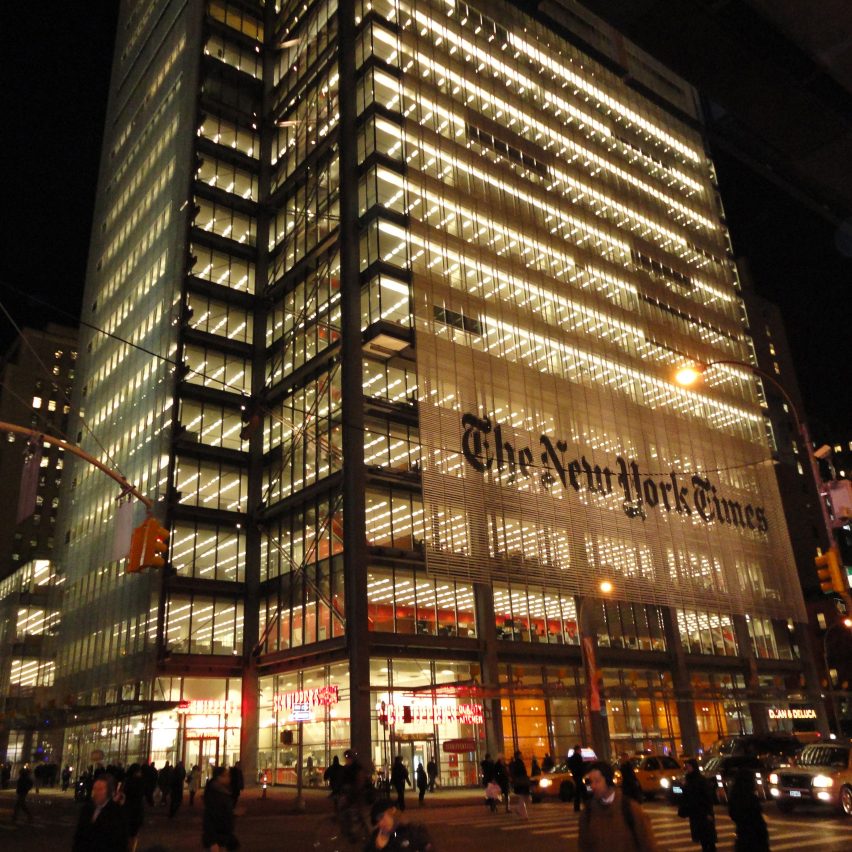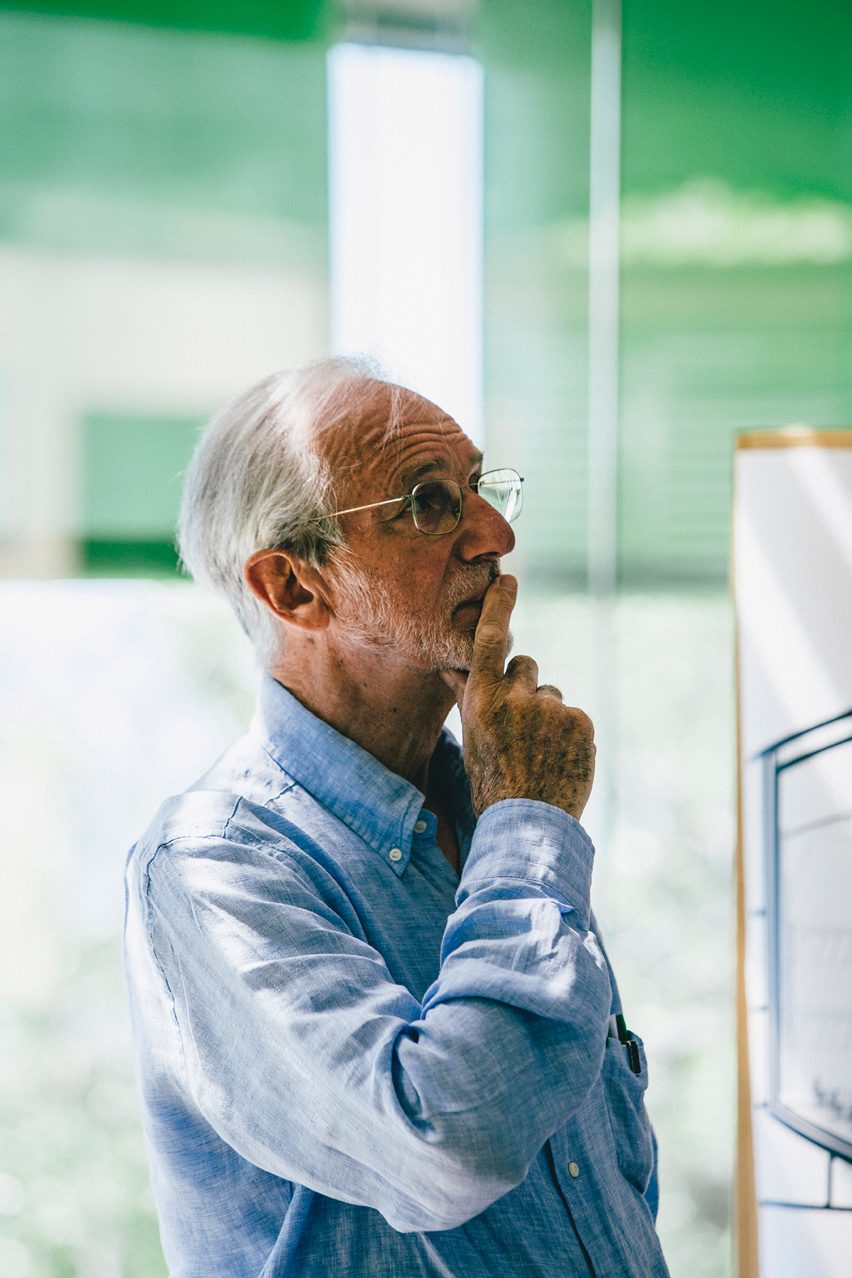Transparent buildings are safer, says Renzo Piano
In this video interview, architect Renzo Piano discusses designing his glass skyscraper for The New York Times in the wake of the 9/11 terrorist attacks.
Piano began work on the project just three days after the city's Twin Towers were destroyed in 2001, and said everyone was unsurprisingly fearful of building another high-rise that could become a target.
"It was September 14, when we met with he client 2001, so it was in New York, in a city that was a disaster," the Italian architect said. "A city with a sense of fear. Everybody started to say: stop making tall buildings... Make bunkers, make a fortress."
But he ignored the mood and instead chose a height of 319 metres, including a mast, for the Midtown Manhattan skyscraper.
He wrapped the base in glass to allow views out from the interior and in from the street – a feature he believes makes the building much safer.
"We decided to go ahead, and we did it," he continued. "We are The New York Times, we need to do that gesture to show that transparency of the ground floor was more safe than protection. When you see through, that means it's more safe. You can see what happens so, opacity is unsafe, not transparency."

Piano also used glass for the upper levels, but shaded the facades with a ceramic sunscreen in a first for a high-rise in the US. Towards the top, the spacing between the ceramic rods increases, so the building appears to dissolve into the sky.
The New York Times Building completed in 2007 and is home to The New York Times Company, which publishes The New York Times and International New York Times newspapers.
The skyscraper is now the sixth tallest in the city, tied with Jean Nouvel's 53W53 – nicknamed the MoMA tower and still under construction – and the iconic Chrysler Building.
The clip comes from a longer video interview conducted by architect Luis Fernández-Galiano at Piano's house and studio in Punta Nave, Genoa, as part of Spanish cultural institution Arquia Foundation's Maestros series.
Aiming to document the life and work of several "outstanding masters of architecture", each episode comprises six parts to offer a chronological overview of the subject's life. The first covers childhood, while the other five sections explore themes in work, spotlighting three key projects in each.

Transparency was chosen as a focus in Piano's interview. His firm Renzo Piano Building Workshop is known for using copious amounts of glass in buildings like The Shard in London and recently completed law courts in Paris. The studio's other projects in New York include the Whitney Museum in the Meatpacking District, facilities for Columbia University in Harlem, and a residential building underway in Soho.
Maestros is being produced by White Horse and managed by design agency Folch. The Renzo Piano documentary will be the first in the series, and premieres in Madrid next year.
The full-length film also covers the influence of his builder father and how he never intended on becoming an architect, as well as his extension to Louis Kahn's Kimbell Art Museum.
Photography is by Leo García Méndez.